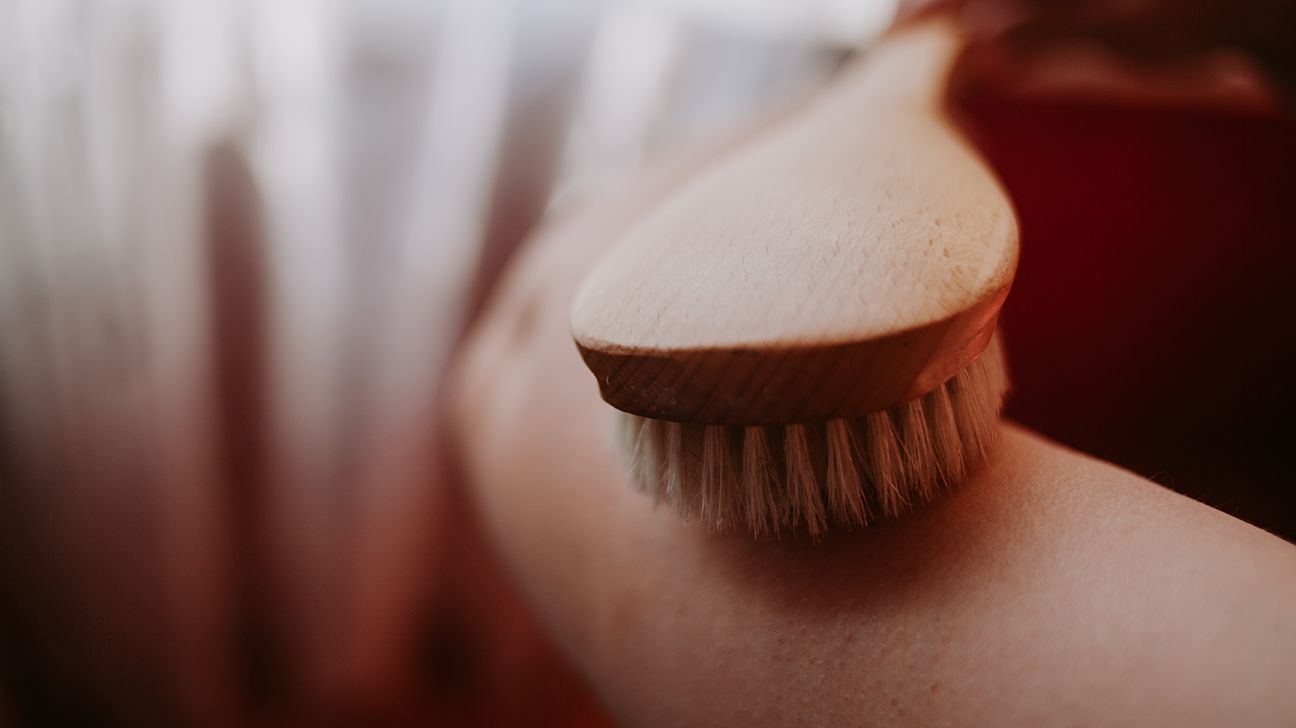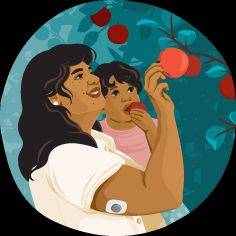Dry skin brushing benefits may include stimulating the lymphatic system, exfoliating the skin, removing toxins, increasing circulation and energy, and reducing cellulite.

Dry brushing, or gharshana, is an Ayurvedic medicine technique that has been around for centuries.
Proponents believe dry brushing may have many health benefits and mainly works by exfoliating the skin. Practitioners rub a brush with coarse, natural fiber bristles over their bodies in a particular pattern.
The idea is that the coarse fibers will help to remove dead skin and improve the skin’s ability to eliminate toxins through the pores.
While there is little scientific evidence to support the benefits of dry brushing, it is unlikely to cause harm for most people. The possible benefits may include:
Lymphatic system and the removal of toxins
The lymphatic system helps your body fight off infections. Fluids flow through the system and are filtered through the lymph nodes. If you’re sick or exposed to a lot of toxins, the system may become backed up and clogged. That is why your lymph nodes can become swollen when you have a cold.
Dry brushing is thought to help the body release toxins through sweat. The course bristles on the brush stimulate the pores and open them up. This makes it easier for the body to sweat, which in turn reduces the amount of toxins flowing through the lymphatic system.
There is little research to support this claim.
Exfoliation
The coarse bristles can brush away dry, dead cells from the skin. Exfoliating your body can leave your skin more smooth and soft. It may also support collagen production.
Relaxation
Dry brushing may make you feel relaxed, similar to a massage. To maximize this benefit, practice dry brushing in a calm, quiet space.
Cellulite
Cellulite is a condition that mostly affects women. Areas affected by cellulite have a rippled or “cottage cheese” appearance. The cause is not fully known.
Research from 2020 suggests some types of massage may temporarily reduce the appearance of cellulite, though the researchers in the study evaluated vibrational massage for this purpose.
Some people claim that dry brushing can reduce the appearance of cellulite because it has similar effects on the body as massage. There’s no scientific data to support this theory, and it’s not a recognized treatment by most doctors.
Benefits of dry brushing
Proponents believe dry brushing may help your body release toxins. It may also help you relax. There’s little data to support the benefits of dry brushing, but for most people, there’s also little harm in practicing dry brushing.
Some people may need to avoid dry brushing or proceed with caution.
People with open or inflamed skin, including people with eczema and psoriasis, should avoid dry brushing over the inflamed area.
You should also avoid dry brushing over an open wound. You could introduce bacteria to the wound, which could lead to infection.
Risks of dry brushing
Dry brushing may not be for everyone. If you have sensitive skin or a skin condition, such as psoriasis, speak with your doctor before dry brushing.
To dry brush, use a natural fiber brush with a long handle. The long handle will help you reach all areas of your body. Follow these steps:
- Start at your feet and move up your body.
- Brush your skin using wide, circular, clockwise motions.
- Use light pressure in areas where your skin is thin and harder pressure on thicker skin, like the soles of your feet.
- Brush your arms after you have brushed your feet, legs, and mid-section. You should brush upward toward your armpits.
- After dry brushing, take a cool shower to help remove the dry skin.
- After your shower, dry off, and then consider adding natural plant oil, such as olive or coconut oil, to moisturize your skin.
When you first start dry brushing, it’s best to begin with light brushing. As you get used to it, you can increase the pressure.
Avoid sensitive areas and anywhere the skin is broken. These include areas with:
- rashes
- wounds
- cuts
- infections
Never brush an area affected by poison oak, poison ivy, or psoriasis. Do not dry brush your face unless you’re using a softer brush made for that purpose.
What supplies do I need?
All you need to dry brush at home is a brush with natural fiber bristles. You should also look for one with a long handle to help you reach every part of your body.
You may want to dry brush in the shower so that you can easily clean the area once you’re done. You may also want to have a moisturizer, such as natural oil, on hand.
You should be able to find a brush for less than $10. Dry brushing kits are also available, though these are more expensive.
Dry brushes are available at health food stores or online.
If you don’t want to dry brush yourself, you may be able to find a local spa that offers dry brushing. If you have a treatment done at a spa, ask them how they clean the brushes and let them know about any areas they should avoid.
Brush maintenance
It’s best to rinse your brush after you have completed your brushing routine. Dry it in an open, sunny area to prevent mildew. Clean your brush once a week using soap and water. Avoid sharing your brush with anyone. This can help prevent the risk of infection.
There’s little scientific evidence to support the benefits of dry brushing. For most people, however, there’s little risk. If you’re interested in dry brushing, you can purchase a brush and try it at home.
If you have a skin condition, such as psoriasis, you should speak with your doctor before dry brushing. Be sure to avoid brushing over or around an open wound or infection.




